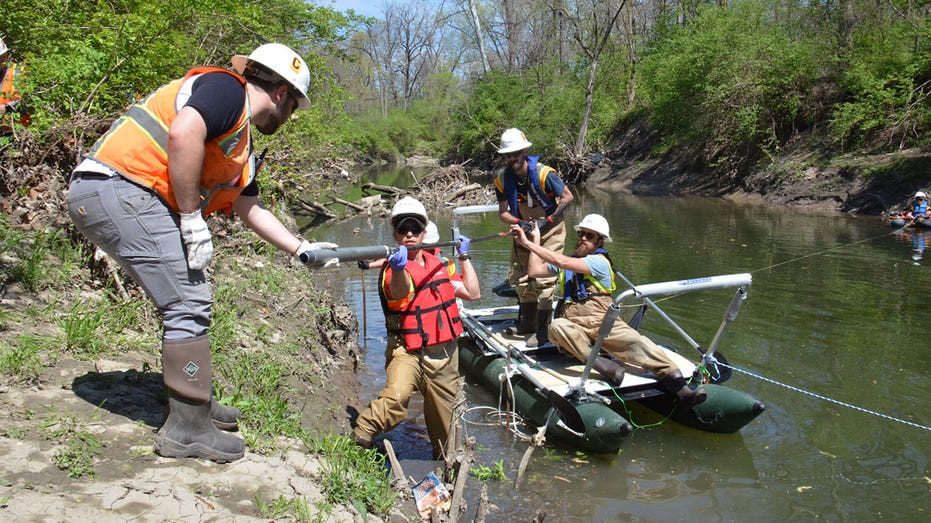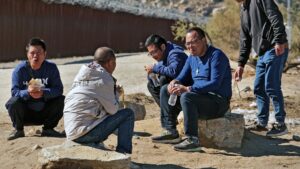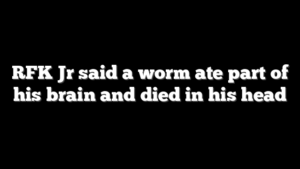
St. Louis’ toxic sites need faster cleanup, lawmakers and residents say
Some Missouri residents and lawmakers are calling for faster cleanup at several toxic sites in the St. Louis area.
“We always felt like we’re being gaslit by these federal agencies, like the way they would answer questions, the way they were just very nonchalant,” Just Moms STL co-founder Dawn Chapman told Fox News. “They really should have gone in there before any of this was built and cleaned the creek. They had a chance to really prevent all the harm that we’re seeing now. And for whatever reason, they chose not to.”
Chapman’s group, which she founded with her neighbor Karen Nickel, advocates for the cleanup of contaminated sites in St. Louis.
“We’ve talked to a lot of people that live just less than a half a mile from West Lake Landfill,” Nickel said. “Since those homes were built there back in the late ’50s, they had no idea that a landfill was even there.”
MORE PEOPLE EXPOSED TO MANHATTAN PROJECT CHEMICALS DESERVE COMPENSATION, ADVOCATES SAY
Nickel and Chapman said when they bought their homes, they were unaware the landfill was located nearby and that it was designated as a superfund site.
“It was like, what the heck is that? I didn’t know to even look for that when I purchased my house,” Chapman said.
The Environmental Protection Agency (EPA) has been providing updates on the cleanups using social media, making information accessible online.
“There are some of the activists that are in the area and the community members that are very strong, that are always willing to provide information. We really tried to beef up our relationship with the key community members, and I think that’s paying off,” EPA Region 7 Superfund and Emergency Management Division Director Bob Jurgens said.
The EPA added the West Lake Landfill to its national priorities list in 1990. The list is part of its Superfund sites program documenting hazardous waste sites in the country. Those locations are eligible for federal funding to pay for extensive, long-term cleanup actions.
“The Superfund process can be very lengthy. We understand their concerns with that,” Jurgens said.
The EPA proposed a plan for remediation in 2006. After a public comment period, the agency adjusted its plan and released a new Record of Decision in 2008.
“Based on feedback from the community, there was an amendment to that which was completed in 2018,” Jurgens said. “It’s been pretty much nonstop work with the responsible parties to do the assessment, the remedial design, and then eventually get to the implementation.”
Nearly 35 years after its designation as a Superfund site, residents have argued the process should be further along.
“We’re told we’re close to getting it there. But, you know, we’re running up against a clock,” Chapman said.
The EPA admitted it did not have a firm schedule for when the West Lake Landfill will be fully cleaned up.
“We don’t have a timeline. It’s difficult to guess how long this is going to take. We’ve made really good progress with the responsible parties on doing the full assessment,” Jurgens said.
Adding to the complex work, a fire has been burning at the site for nearly a decade. The EPA reported it did not know how the fire started.
“It’s not uncommon for there to be landfill fires,” Jurgens said. “Once that fire is underground, it’s really difficult to put that out. But they’ve done some really good actions at that site to address that.”
Jurgens said there was significant space between the fire and the radioactive waste. Crews have installed a barrier to contain the fire and officials said there’s currently no risk to residents in the area.
“That subsurface smoldering event is definitely in better shape than it was several years ago,” Jurgens said.
Chapman and other people living in the area said issues in the past have contributed to the lengthy cleanup happening today.
“The truth is, that both federal agencies in charge of this radioactivity across the region, have made huge errors and mistakes in characterizing it,” Chapman said.
OFFICIALS KNEW MANHATTAN PROJECT CHEMICALS DISPOSED IMPROPERLY AT MISSOURI SITES, DOCUMENTS REVEAL
The two sites where toxic waste was stored after the Manhattan Project were added to the national priorities list in 1989. The list has not included Coldwater Creek, which extends from those sites, but locations along the creek where radioactivity has been found have fallen under the storage sites’ listing.
“This creek goes 14 miles throughout the county that I serve. And so I just believe that the whole entire creek should be tested,” Missouri State Rep. Chantelle Nickson-Clark said.
Nickson-Clark, a Democrat, is a two-time cancer survivor who grew up near Coldwater Creek. She’s representing the area and recently hosted a town hall to hear the stories of others living there.
“A lot of the constituents shared how they too have lost loved ones and are dealing with the aftermath,” Nickson-Clark said. “It is very sad to see my community hurting and dealing with such effects of Coldwater Creek. We know that there are a lot more stories out there.”
The Army Corps of Engineers, the lead federal agency working to clean up the waterway, has estimated that the effort could take until 2038.
“If you do the math, we’re already 80 years into it,” Nickson-Clark said. “Some of us may not even experience the cleanup in our lifetime.”
Like the EPA, the Army Corps of Engineers admitted the process has been lengthy.
“There’s an extensive amount of coordination, investigation, documentation, remediation that we have to do just to get one area. So the overall process definitely does take some time,” U.S. Army Corps of Engineers St. Louis District Program Manager Phil Moser said.
Sen. Josh Hawley, R-Mo., said the timeline for cleanup at both sites was unacceptable.
“This is outrageous. Let’s remember, this creek has had contamination in it since the ‘50s, since the ’60s and now 2038? I mean, we will be getting close to the century mark,” Hawley said. “They should quit kicking the can down the road. This ought to be an all-hands-on-deck effort.”
The Army Corps of Engineers has been taking samples along the 14-mile stretch of Coldwater Creek. The area included some 756 properties such as homes, commercial locations and recreational sites. They’ve been testing for uranium, radium and thorium, among other contaminates.
“When the Army Corps took over in 1998, the extent was not 100% known,” Moser said. “We got to 2012 and realized that there was more extensive sampling needed in Coldwater Creek.”
30 HOUSE REPUBLICANS TAKE ACTION TO OVERTURN BIDEN’S GAS CAR CRACKDOWN
New maps from the agency showed locations with contaminated soil. They also showed parts where crews were taking samples and areas they had tested and determined safe.
“There is more waste than they’re saying there is,” Nickel said. “The Army Corps, I don’t know whether it’s that they’re not coming forth, being truthful, not being transparent. It’s hard to tell because it’s not been a very trusting relationship with that agency over the years.”
Coldwater Creek flows behind Jana Elementary School. It closed in 2022 after thorium, which has been linked to cancers, was detected on the property.
“Jana Elementary School was truly a nightmare come true for us because we knew where it’s at along the creek,” Chapman said.
Ashley Bernaugh is also a member of the Just Moms STL group. She was PTA president at Jana Elementary, which her son attended. She said she had been requesting testing and documents from the Army Corps of Engineers for several years.
“Since 2018, the Army Corps of Engineers has really done its due diligence, and the Department of Energy along with them, to not answer my questions,” Bernaugh said.
Moser said the agency tested both inside and outside the school and determined the contamination was background radiation.
“We verified and concluded that the school was safe from a radiological standpoint, and we stand by that, as well as the federal agencies that reviewed our documentation,” Moser said.
Bernaugh and other advocates said it wasn’t enough. They eventually had an outside company take samples from the school grounds.
“The Boston Chemical Company were able to take dust samples and analyze them and found thorium 230, which is a metallic kind of thorium used in the radioactive bomb waste that is from early weapons development in St. Louis,” Bernaugh said.
The Army Corps of Engineers reported it found dangerous levels of thorium, but only in locations close to the creek.
“The banks of the creek are being remediated by the Army Corps of Engineers because it meets their magical threshold. Of what? What they’re willing to clean up of radioactive waste?,” Bernaugh said.
The Army Corps also has been taking soil samples from homes near Coldwater Creek after finding contamination on the properties.
“They’re finding radioactive contamination under people’s basements next to the creek,” Hawley said. “They’ve never made it right. They’ve never compensated Missourians for what they did and they haven’t cleaned it up. They need to clean up the creek. They need to clean up the landfills, and they need to compensate people who’ve gotten sick.”
Latest Political News on Fox News








